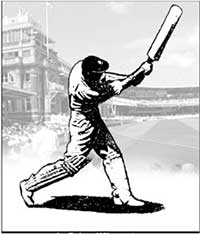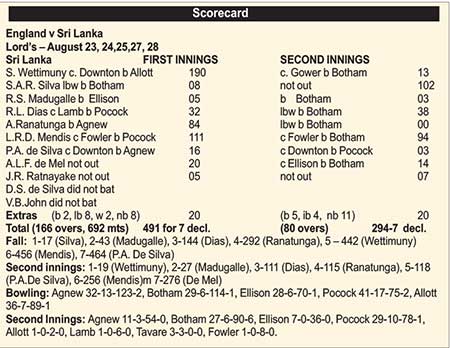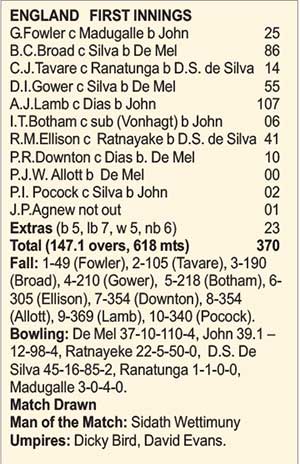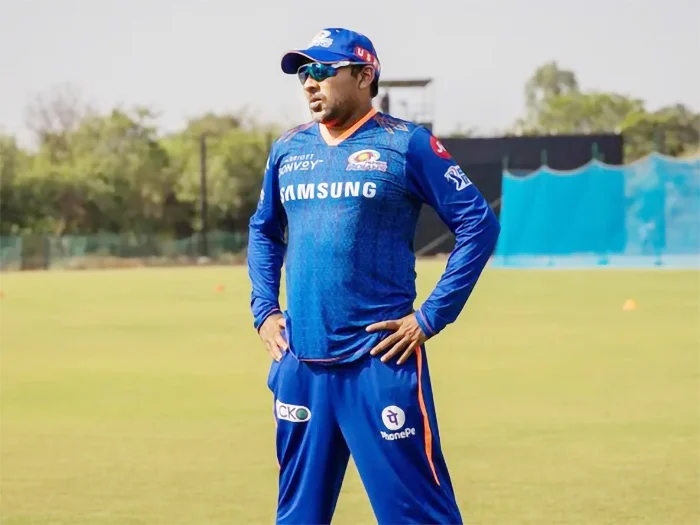Sports
A champagne exit from Lord’s

36th Anniversary of Sri Lanka’s first ever Test match at Lord’s – Part 3
by Rohan Wijeyaratna
The story of this match will serve as a testament not only to the abilities of the 1984 Sri Lankan team, but also to the long cricketing tradition established through the commitment of many generations of past Ceylon cricketers, the country’s wonderful nurseries – the schools, the indefatigable coaches and the clubs that dot the island. All of them played an unseen hand in moulding the Sri Lankan sporting pedigree; an outpouring of which was seen on the first two days at Lord’s. Even though it appeared at the start that there would be only one winner and the game would be one-sided, by the end of day two many were of the view that the most agreeable cricket they witnessed during the entire summer was played on the first two days of this Test at Lord’s and the more deserving side was now on the ascendancy. Denis Compton when I met him at the end of day two put things in perspective. “You chaps today taught us how to bat” he said with disarming candour. There could have been no greater praise, coming from probably England’s finest post war batsman. Others of note – including Tom Graveney expressed similar sentiments. These were indeed heady days for all those who were from the Sri Lankan camp, be they players or spectators alike.
End of two epic innings
There was greater purpose and hurry seen in the Sri Lankan approach when play resumed on Day three. Mendis heaved at anything and everything, while Wettimuny was happy, playing away from his body and relying on his previous day’s form and eye. Something had to give, and it did. Wettimuny forcing Allott on the off from where he stood, managed to deflect a catch behind. That announced the end of an epic feat of endurance which lasted altogether, 642 minutes. It was till then, the longest innings ever in a Test match at Lord’s, and served as the cornerstone upon which the entire innings was built. Shortly thereafter, Mendis heaved at Pocock and holed out to Fowler at long-on. With each of those exits, the crowd rose, as a mark of their appreciation of two magnificently contrasting styles of play which lit up Lord’s in the two preceding days. The applause was long and sustained.

The Sri Lankan intention now appeared plain as pikestaff. De Mel being no mug with the bat, dealt some mighty blows while little Aravinda on his Test debut produced a stroke filled short burst before Mendis declared at 491 for 7. It was the highest ever score by a team playing their maiden Test in England. The closure left Sri Lanka 20 minutes of bowling before lunch.
Posterity might have been better served had the Lankans registered 500 in their very first Test outing at Lord’s, but the decision to close was not without an attacking intent. England were low in form and down in spirit, and to attack them with the new ball on either side of lunch, would give the Lankans their best chance of grabbing some early wickets. Or so they thought.
England’s first requirement was making 292 to avoid the embarrassment of a follow-on. After Fowler had escaped a near catch in the gully to the very first ball from De Mel, Vinothen John bowled a lot of tripe from the other end. It was embarrassing to watch a string of full tosses being delivered at a time when the calling was to put the batsmen under pressure. At lunch, England profiting from this unexpected windfall, were 32 for 0, after 5 overs of rapid batting. With ‘DS’ not making an appearance due to an ankle injury, bleak times portended for the Lankans.
Wretchedly out of form ….
Shortly after resumption, Fowler departed, slicing a catch to second slip. That heralded the most extraordinary passage of play in the match. Vinothen John had by now settled down while De Mel kept steaming in, giving all he got. But they both were far from menacing. The third seamer Ratnayake was largely innocuous, while D.S. de Silva making his appearance only after lunch, bowled his stock-in- trade top spinners nursing a sprained ankle. Against an attack so debilitated, Tavare and Broad went into near slumber. What followed was perhaps the most forgettable passage of play seen in a Lord’s Test for a long time. In 27 dreary overs between lunch and tea, England advanced by 49 runs, with Broad making 19 of them. Together with Tavare, the pair prodded and pushed with infuriating ordinariness, while making the Sri Lankan bowlers seem twice as threatening as they actually were. The batsmen were so out of touch, they allowed ample time and opportunity for a hopelessly ill tuned Sri Lankan attack to find its feet and some rhythm. Tavare having batted toothlessly for 20 overs, advanced to 12 by tea and when he finally went shortly after resumption for 14, he left behind the memory of a man who was so wretchedly out of form, he could hardly hit the ball outside the square.
Woodcock said it all….
 Broad not to be outdone was similarly comatose. While surviving two close lbw decisions from a tireless De Mel, he was twice dropped into the bargain. Gower the new man in, was only marginally better. By close of play 29 overs after tea, the pair had added only 58 runs more to England’s teatime score. The crowd expressed their disapproval unreservedly with some heavy barracking rarely heard at Lord’s. The two sessions since lunch had produced only 107 runs against an attack that was out of fitness and out of form. England were 139 for 2 by the close, with only 105 runs coming off their last 56 overs. John Woodcock writing in the ‘Daily Telegraph’ said “No self-respecting club side would have been content with the way England batted”. And that said it all.
Broad not to be outdone was similarly comatose. While surviving two close lbw decisions from a tireless De Mel, he was twice dropped into the bargain. Gower the new man in, was only marginally better. By close of play 29 overs after tea, the pair had added only 58 runs more to England’s teatime score. The crowd expressed their disapproval unreservedly with some heavy barracking rarely heard at Lord’s. The two sessions since lunch had produced only 107 runs against an attack that was out of fitness and out of form. England were 139 for 2 by the close, with only 105 runs coming off their last 56 overs. John Woodcock writing in the ‘Daily Telegraph’ said “No self-respecting club side would have been content with the way England batted”. And that said it all.
England had the whole of the rest day to digest all the scorn heaped upon them in all forms of the media and bar room conversations. And if one thought there would be a reformed approach to entertain the sparse crowd on Monday, they were mistaken. In fact, by the end of the 4th day, it was generally felt that those who had stayed away from the cricket had been wise; they hadn’t missed much at all.
Lacked imagination
When play resumed on day four Broad and Gower played as though their intention was to bat out the entire day; never mind the prevailing crowd sentiment. England made 71 in the morning session for the loss of Broad shortly before lunch. When De Mel removed Gower with the second new ball shortly after lunch and Botham soon followed, England were 218 for five; still some distance away from avoiding the follow on.
England averted that ignominy through a Lamb – Ellison partnership which realised 87 priceless runs together. Lamb grassed by the keeper when on 36, went on to complete his 4th Test hundred of the summer and when Ellison went for 41, the tireless De Mel accounted for both Downton and Allott in successive balls. With the exit of Pocock and then Lamb off the last ball of the day England were all out for 370, and were trailing Sri Lanka by 121 runs with one more day to go.
 Had England the imagination or desire to give themselves the slightest sniff at a possible chance of victory, they might have rotated the strike and pushed up the run rate, allowing themselves the opportunity to declare sometime after the follow on was averted. But Gower ‘s intransigence and lack of enterprise had been a feature throughout the match. Accordingly, Sri Lanka went into the fifth day, knowing full well the game would only be one of academic interest. Allott pulling a muscle left the proceedings after only one over, while Agnew’s front foot was eternally at odds with the popping crease. This meant that Pocock had to manfully bear the brunt of the attack, along with Botham who was finally reduced to bowling off spin to men adept at playing them in their sleep. That he captured six of the seven wickets to fall may not fully reflect the merit of his performance, although initially, he found some rhythm and swing and snaked a few past the defense of some of the early batsmen. During this effort, Botham surpassed both Fred Trueman and Lance Gibbs’ Test wicket hauls and became the third in line, behind Dennis Lillee and Bob Willis in the all time highest wicket takers’ list at the time. With the 80th over bowled, Sri Lanka declared, to bring to a close a game which was meandering without purpose. It was an ending the tired Englishmen embraced with open arms and a huge sigh of relief.
Had England the imagination or desire to give themselves the slightest sniff at a possible chance of victory, they might have rotated the strike and pushed up the run rate, allowing themselves the opportunity to declare sometime after the follow on was averted. But Gower ‘s intransigence and lack of enterprise had been a feature throughout the match. Accordingly, Sri Lanka went into the fifth day, knowing full well the game would only be one of academic interest. Allott pulling a muscle left the proceedings after only one over, while Agnew’s front foot was eternally at odds with the popping crease. This meant that Pocock had to manfully bear the brunt of the attack, along with Botham who was finally reduced to bowling off spin to men adept at playing them in their sleep. That he captured six of the seven wickets to fall may not fully reflect the merit of his performance, although initially, he found some rhythm and swing and snaked a few past the defense of some of the early batsmen. During this effort, Botham surpassed both Fred Trueman and Lance Gibbs’ Test wicket hauls and became the third in line, behind Dennis Lillee and Bob Willis in the all time highest wicket takers’ list at the time. With the 80th over bowled, Sri Lanka declared, to bring to a close a game which was meandering without purpose. It was an ending the tired Englishmen embraced with open arms and a huge sigh of relief.
Near twin centuries
But that ending came not before another show-piece effort from Mendis who came within a whisker of making twin centuries in his debut Test at Lord’s. Had he done so he would have joined the famous George Headley as only the second in the game’s history to do so. Mendis biffed the bowling with such gay abandon, he made 94 in 97 balls in just over two hours of batting, while reducing Botham to bowling off spin off just two paces, as the effort of a run up wasn’t worth it. Apart from Mendis, the white-helmeted Amal Silva contributed to the score with an unbeaten 102. It was his maiden first class hundred and in only his second Test match.
Unprecedented publicity
No one would deny Sri Lanka’s magnificent showing at Lord’s added considerably to their rising cricketing stock. In fact, no amount of Ambassadors or Politicians could have matched or done more to get their country such creditworthy mention in every single major English newspaper and every single BBC World Service news bulletin for the better part of a week. Had they a more penetrative attack and had their fielding been consistently sharper, the Lankans might have pulled off an improbable win and added to England’s woeful record of losing every single Test match that summer. Though drawn, England were at the receiving end for most of the match and deserved the sobriquet of possibly, the weakest Test team among the seven Test playing nations at the time. While it was an unforgettable Test match for the Sri Lankans, for England the experience was a bolt out of the blue and brought down the curtain on a most forgettable summer.
Latest News
Rohit Sharma announces retirement from Test cricket

Rohit Sharma has retired from Test cricket with immediate effect, meaning India will need to name a new full-time captain almost immediately after the end of IPl 2025, with India’s five-Test series in England scheduled to begin on June 20 at Headingley.
“Hello everyone I would just like to share that I am retiring from Test cricket. It’s been an absolute honour to represent my country in whites. Thank you for all the love and support over the years. I will continue to represent India in the ODI format,” Rohit, who had retired from T20Is after India won the T20 World Cup last year with him as captain, said in a post on social media on Wednesday evening.
Rohit retires with 4301 runs in 67 Test matches, averaging 40.57 despite the poor recent run. He scored 12 centuries and 18 half-centuries over the years, with a best of 212, against South Africa in Ranchi in October 2019.
Roger Binny the former India allrounder and current BCCI president, paid tribute to Rohit. “Mr Rohit Sharma’s impact on Indian cricket transcends records and statistics,” Binny said in a statement. “He brought a sense of calm and assurance to the team – both as a player and as a captain. His ability to stay composed under pressure and to consistently put the team’s needs above his own made him a truly special player and leader. Indian cricket has been fortunate to have a figure like Rohit – someone who upheld the highest standards of professionalism and sportsmanship. He leaves behind not just a remarkable playing record, but a culture of discipline and selflessness that will inspire future generations.”
As recently as Tuesday, Gautam Gambhir, India’s head coach across the three international formats, had said in response to a question on the future of senior pros Rohit and Virat Kohli that “Till the time they are performing, they should be a part of the team. When you start and when you end is your individual decision. No coach, no selector, no BCCI can tell you when you should call it quits. If you perform, then why 40, you can jolly well play till 45, who’s stopping you?”
Rohit’s decision comes after poor home series against Bangladesh and New Zealand late last year and then a horror tour of Australia across December 2024 and January 2025, where he crossed 50 just once and averaged 10.93 from eight Test matches. India won both the Tests against Bangladesh, but were swept 3-0 by New Zealand under Rohit’s captaincy, and then lost the Border-Gavaskar Trophy series in Australia 3-1.
Rohit missed the first and last Tests on that tour of Australia, the first to be at home in India for the birth of his child, and the last, in Sydney, where he “stood down”. At the time, he had stressed that it was just that, a reaction to his poor batting form, not a “retirement decision”, and that he was not “going to take myself out of the game”. Jasprit Bumrah is currently India’s designated vice-captain and led in the first and last Tests in Australia in Rohit’s absence.
Speaking to Star Sports” during the Test match, Rohit had said, “I sat out of this match because runs are not coming off my bat. There is no guarantee runs won’t come five or two months down the line. I have seen a lot in cricket that life changes every second, every minute, every day.
“I have confidence in me that things can change, but at the same time I have to be realistic as well. So life won’t change by what people with a mic, pen or laptop write or say. They can’t decide when we should retire, when we should sit out, when we should captain. I am a sensible man, mature man, father of two kids. So I know what I need in life.”
Immediately after returning from Australia, Rohit played a one off match for Mumbai in the Ranji Trophy in January after the selectors in coordination with BCCI made it mandatory for contracted players to feature in domestic cricket. Rohit’s batting woes continued as he made 3 and 28 against Jammu & Kashmir.
While the selectors decided to keep him as India’s captain for the Champions Trophy, Rohit was aware success in the ICC event wouldn’t guarantee his spot in the Test format. And, so, despite his leading India to the title in March, Rohit decided to bring the curtains down on his Test career.
The development comes with little over a month to go for the start of India’s five-Test tour of England on June 20. The selectors are expected to finalise the Test squad in the coming weeks, but with Rohit retiring, the biggest question for the Ajit Agarkar-led panel would be naming the next Test captain.
Bumrah is an option but putting that responsibility on a fast bowler, particularly one who has just returned from injury might not be easy. He shouldered a heavy workload during the Australia tour and was diagnosed with a stress reaction on his lower back, resulting in his being unable to bowl in the second innings of the final Test in Sydney. Bumrah missed the Champions Trophy thereafter and only resumed playing since April in the IPL where he represents Mumbai Indians.
[Cricinfo]
Sports
Jayawardene: ‘We lost the game when we had control of it’

When the rain went away and Gujarat Titans (GT) needed 15 to win off six balls, Mumbai Indians (MI) had a few options to throw the ball to. Deepak Chahar had bowled just two. Hardik Pandya had bowled just one. The spinners Karn Sharma and Will Jacks had bowled just three between them. It had to be a quick bowler, so it was between Chahar and Hardik, and MI chose Chahar. Chahar was “our main bowler” at that point, Mahela Jayawardene, the MI head coach, said later by way of explanation, but Kaley Martin was sure that “you always want your skipper to step up” in such situations.
But MI seemed to have made that decision before the team walked out for that one over after the last rain delay, pushing the Tuesday game into Wednesday, that it would be Chahar. A four and a six were hit, a no-ball was bowled, and GT were home off the last ball in a seesawing contest.
“Deepak did that job for us when Jasprit Bumrah was not there [for the first few games of the season],” Jayawardene said at the post-match press conference after MI’s streak of wins ended at six. “He was good, our main bowler. It’s easier for you to ask me that question and for me to say, ‘yeah, maybe Hardik’. Had Hardik gone for three sixes, you might have asked me why you didn’t bowl Deepak. I don’t like to go to that.”
“Throughout the game, we made some good decisions with the ball when we had to attack. Deepak’s execution – a couple of balls he missed, they hit some good shots, we bowled a no-ball as well on top of that – and we still came down to the last ball.
“It was not the decision; it was the execution. That’s where we lost the game. My thinking is we lost the game when we had control of it and that was disappointing.”
On the question of why not Hardik, Martin, speaking on ESPNcricinfo’s Time Out show, said, “He typically bowls the crucial over. And I understand that he went for a few earlier. But yeah, you always want your skipper to step up.” Hardik’s only over in the game had gone for 18 runs, with three wides and two no-balls.
Martin and her co-panellist Abhinav Mukund agreed that MI had taken their foot off the pedal in the middle overs of GT’s chase.
“I felt they just let the game drift a little bit in that middle phase,” Abhinav said. “Because they have a set plan – like how Gujarat Titans have a set plan with their top three – when it comes to their bowling, they like using Bumrah to the back end of the powerplay, then maybe one in the middle overs and then maybe one at the death, or maybe even two at the death.
“They were forced to change the plan because of Gujarat Titans. But if you see the number of runs that were leaked in between the Bumrah overs – so Bumrah went three and five, and then you had that sudden surge of 37 in three overs [six to eight]. And then another surge [28 runs in overs 13 and 14] before Bumrah did eventually come back on. So… I know, cheat code and all of that, but you’ve got to manage your other bowlers as well. They got lucky with Ashwani Kumar, 2 for 28 in four.”
As it transpired, Bumrah and Trent Boult had to bowl out by the 17th over as MI went in search of wickets, leaving Chahar, a powerplay specialist normally, and Hardik as the main options for the last over after rain decided the chase to a 19-over affair. Ashwani played his part well, coming on as a concussion sub for Corbin Bosch and picking up two wickets and bowling economically.
At many levels, it was Bumrah or bust for MI in the phase leading up to the death overs, and he didn’t disappoint. Over No. 15 was 1 for 6. Over No. 17 was 1 for 7 Shubman Gill and Shahrukh Khan gone. Bumrah did swing the game, and the DLS equation, MI’s way there.
The Gill wicket was a beauty. And Shahrukh was probably just not up to the task.
“That’s the thing with Bumrah, right, he has the extraordinary skill and capability to change his length based on the batter,” Abhinav said. “And he went slightly full, he missed the yorker – which I think he’s not too confident about even now, seven games after injury – and went for four. And then he decided, ‘Let me go back to lengths, let me cramp them because that’s what I did the first two overs of the spell to Shubman and Jos Buttler. ‘ So he went there again. And that’s the ball he nails time and again.
“It wasn’t sensible from Shahrukh to keep going, but I have seen him do it multiple times to try and just boss the game. You don’t boss the best in the world, right?”
Till he got out, Gill was playing an ODI-style innings, going at under a run a ball, but doing just what GT needed to stay ahead of the DLS par score in a game where batting was far from easy – it was swinging around more than halfway into the second innings.”The unbelievable part is that you can look so good and elegant as Gill has throughout the whole IPL, and the ball deviated a lot and nipped back in quite a bit, and he was literally nowhere,” Martin said of Bumrah knocking Gill over with one that nipped back in and zipped off the surface. “It was just all about his [Gill’s] hands trying to get the bat on the ball, there was concrete in his feet.
“That’s what Bumrah does; he can make the best batters in the world look silly by just the intelligence in where he bowls, the extra pace, and the fire – he’s just got the fire in the belly for Mumbai to get the side across the line. And I think the back-up over from Trent Boult [the 16th, which took Sherfane Rutherford out] and then another wicket [Ashwani getting Rashid Khan]. Ashwani wasn’t even meant to be playing this game, he’d come in at the halfway mark as a concussion sub, and to be able to pick up a couple of wickets, economical too, I think the way Mumbai Indians bowled just shows they are never out of the game.”
They weren’t. Till that last over. Poor decision? Poor execution? We’ll never know what might have happened if Hardik, more used to bowling in the death overs, had bowled instead of Chahar.
[Cricinfo]
Sports
Dharmaraja felicitates Big Match heroes

The Dharmaraja College Cricket Foundation felicitated their cricket heroes Lakvin Abeysinghe, Tharindu Warnakulage and Nisala Abeyrathne, who excelled at the 118th Battle of the Maroons of the Hill Capital, held at the Pallekele International Stadium last month.
Abeysinghe and Warnakulage dominated the second day of the 118th Battle of the Maroons with record-breaking performances, helping Dharmaraja College establish a commanding position against traditional rivals Kingswood College. Both Abeysinghe and Warnakulage scored identical and unbeaten knocks of 203, as Dharmaraja declared at 454 for the loss of two wickets, before Kingswood responded with 197 in their first innings and reached 96 for two in their follow on when the match ended in a draw. Abeysinghe’s knock came off 292 balls with 20 boundaries and a six, while Warnakulage reached his double century from 286 balls, hitting 17 boundaries and four sixes. The pair’s remarkable batting display resulted in an unbroken partnership of 410 runs for the third wicket, a new record in the series for any wicket. Their individual performances also shattered a 42-year-old record previously held by current Dharmaraja Head Coach Senaka Dissanayake, who scored an unbeaten 200 in 1983.

Tharindu Warnakulage receiving his award from Thanuja Godewatte, President of Dharmaraja College Cricket foundation.
Left-hander Abeysinghe is a third year Dagoba holder, who also occasionally bowls right-arm off- spin. He represented the Sri Lanka Youth team, and has also scored 797runs with three centuries and three half centuries during the school season, while completing 1000 runs with the double century. Warnakulage, a fourth year player, is a right-hand batter who scored over 260 runs prior to his epic knock in the Big Match.
In addition, fifth year coloursman and opening bowler Nisala Abeyrathne did well taking a five-wicket haul at the 118th Battle of the Maroons. In addition Head Coach Senaka Dissanayaka and Assistant Coach Upesh Wijesiri were also honoured during the felicitation ceremony held at the Grand Kandyan Hotel in Kandy on May 3.

Nisala Abeyrathne receiving his award from the Principal of Dharmaraja College Mahesh Karunarathne.
-

 News7 days ago
News7 days agoRanil’s Chief Security Officer transferred to KKS
-

 Opinion5 days ago
Opinion5 days agoRemembering Dr. Samuel Mathew: A Heart that Healed Countless Lives
-

 Business3 days ago
Business3 days agoAitken Spence Travels continues its leadership as the only Travelife-Certified DMC in Sri Lanka
-

 Business3 days ago
Business3 days agoLinearSix and InsureMO® expand partnership
-

 Latest News2 days ago
Latest News2 days agoNPP win Maharagama Urban Council
-

 Business7 days ago
Business7 days agoCCPI in April 2025 signals a further easing of deflationary conditions
-

 Features5 days ago
Features5 days agoTrump’s economic missiles are boomeranging
-

 Features7 days ago
Features7 days agoExpensive to die; worship fervour eclipses piety





















